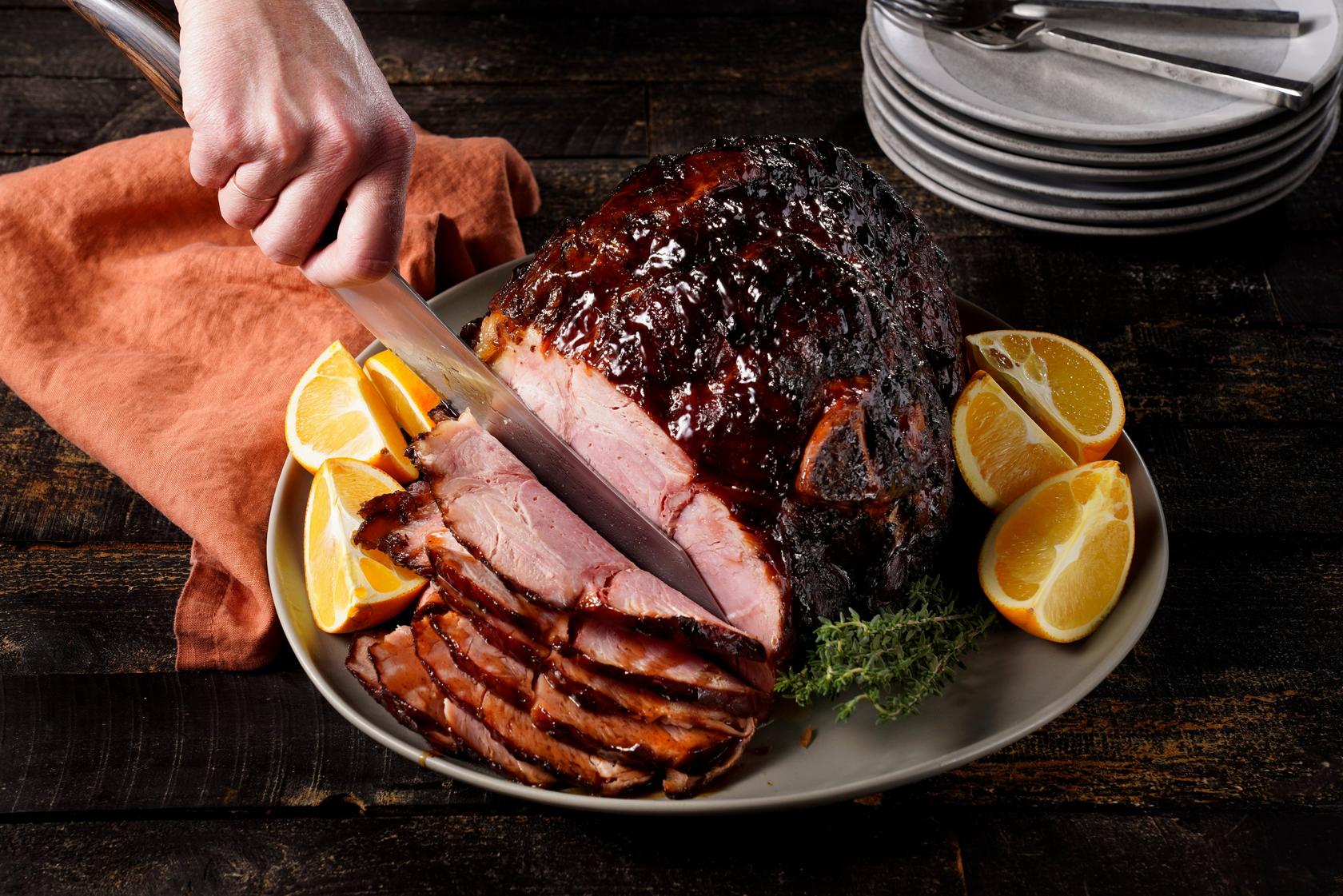
For many people it’s just not a holiday unless there’s ham. And why not? A ham, especially one with a gorgeous and glistening ham glaze, makes an impressive centerpiece. It also feeds a crowd, goes well with all kinds of sides, and any leftovers, both bone and meat, just mean more savory deliciousness from soup to fried rice.
But there’s a dark side to ham as well. If not cooked or reheated properly, it can become dry and bland. But when cooked right and brushed with a flavorful mix of ingredients, a ham delivers on all counts.
To start, you want to choose the right ham for the occasion. Most people go with an already smoked ham (as opposed to fresh) that's already cooked and so just requires reheating. But once you've decided on a smoked ham, there are other variables to consider, such as whole or half, bone-in or boneless, and other options as well. For how to pick the right ham for you, check out this guide to selecting ham.
Once you have your ham home, the best way to reheat it is low and slow on your Traeger. The low temperature (between 225°F and 325°F) will keep it nice and juicy while the Traeger imparts additional wood-fired flavor. And while this article provides more details on cooking, what we’re going to focus on here is the piece de resistance of a great ham, namely, the glaze.
What is ham glaze?
Let’s start with the basics. A glaze is a mixture of ingredients brushed or poured over the surface of a food as it cooks to add flavor, a glossy finish, and to help lock in moisture. Because ham is both savory and salty, most ham glazes tend to contrast that with both sweetness and sharpness. A basic yet tasty glaze consists simply of brown sugar mixed with an equal amount of prepared Dijon mustard. The brown sugar enhances the mild flavor of the ham while the vinegar in the mustard helps balance the sweetness.
You can tweak this basic formula by using various sweeteners including maple syrup, and by adding other ingredients, such as citrus, spices, herbs, and more. (Scroll down to find other flavoring suggestions as well.)
Of course, you can also easily create a delicious ham with a premade Traeger glaze, such as our Traeger Brown Sugar and Honey Glaze used in this 5-star ham recipe. Or try our Mango Habanero Glaze for a bit of sweet heat.
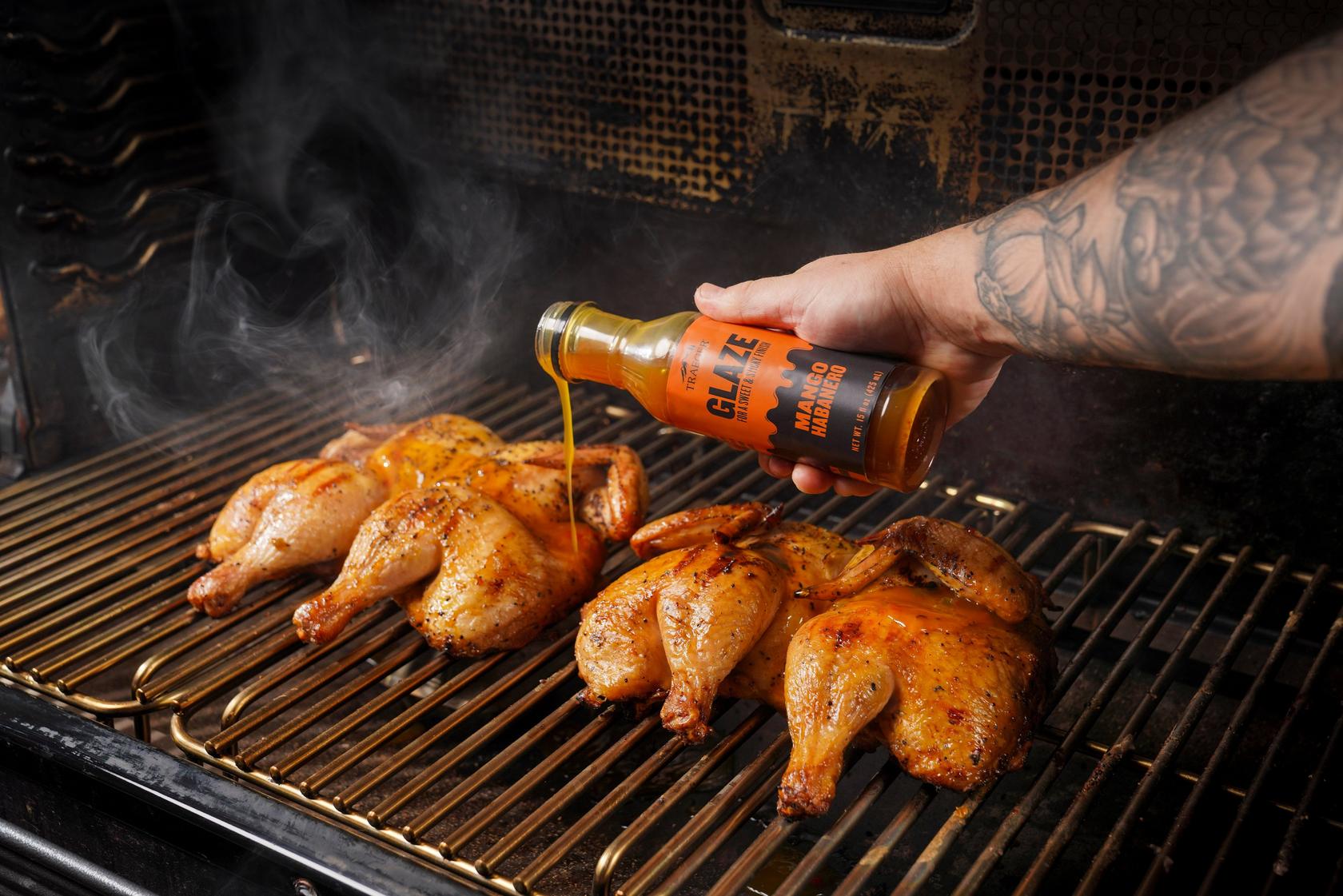
How to make a ham glaze
The beauty of a ham glaze is that it takes about 5 minutes to make. While you do not have to heat the ingredients, doing so will melt the sugar, if that’s what you are using, and will also encourage the ingredients to blend and meld. Heating can also thicken the glaze, which makes it more likely to stay on the ham and not run off the sides.
To make ham glaze, simply combine the ingredients in a saucepan on the stove over medium heat, stirring occasionally, until the sugar is melted (if applicable) or for about 5 minutes if using liquid sweeteners. Resist the temptation to poke a finger into the glaze to taste it while heating as sugar becomes scalding hot. Allow it to cool a bit on a spoon before tasting and adjusting the flavors as needed.
The amount of glaze you will need depends on the size of your ham. For a small half ham, you’ll want at least ½ cup. Extra glaze, if heated to be liquid, can also be served on the side so extra is never a problem. The ham glaze can be prepared ahead of cooking the ham.
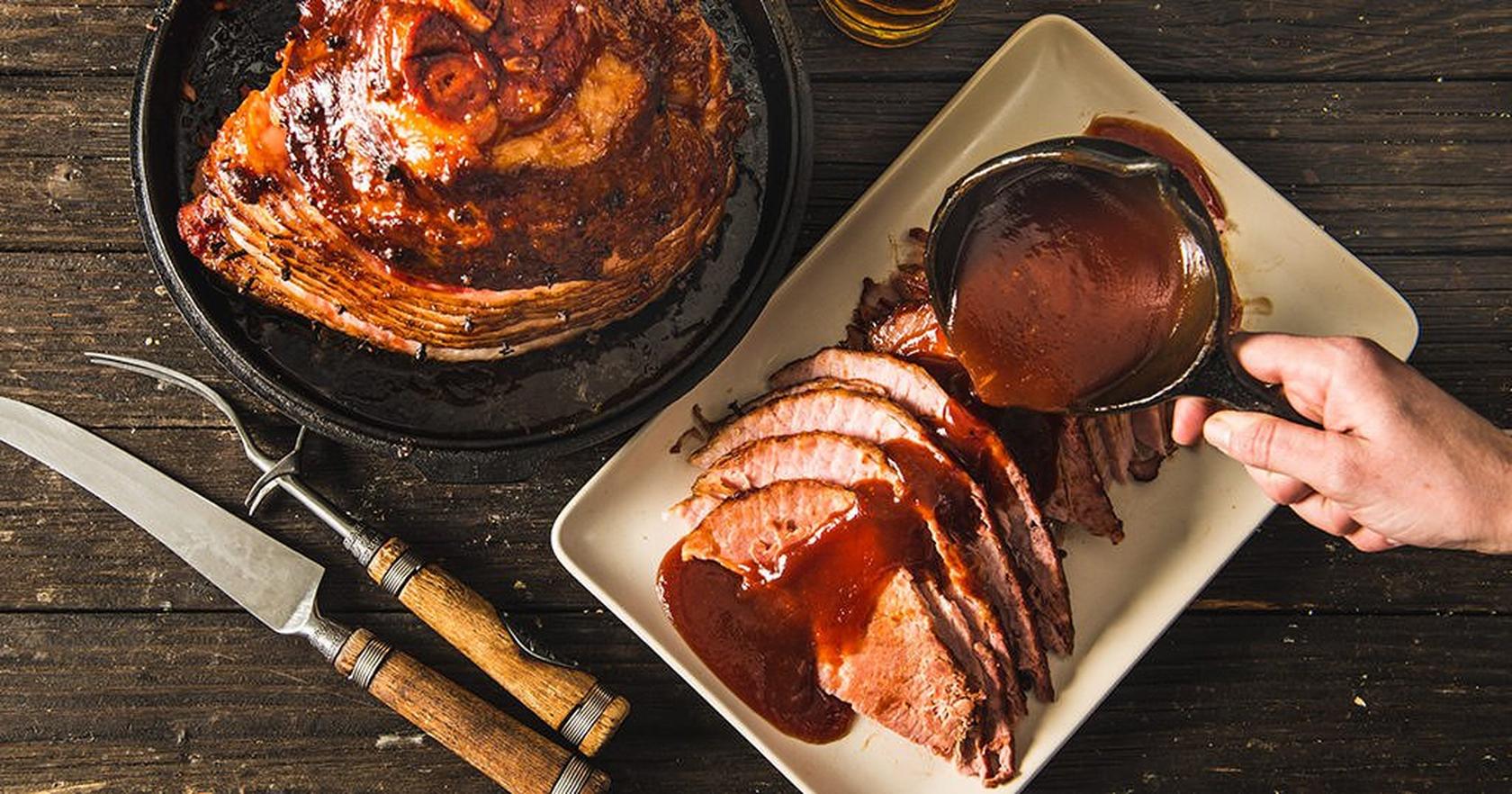
How to prepare a ham for glazing
If your ham still has a thick skin on it, it’s best to remove that to allow the glaze to penetrate the meat. You can also optionally score the layer of fat, which not only looks attractive, but also helps the glaze flavor more than just the outer layer. Generally, the ham is scored in a 1-inch diamond pattern as shown below. Historically, whole cloves were pressed into each diamond as much for decoration as flavor. These days, you can get a similar flavor with less effort by adding a pinch of ground cloves to your glaze.
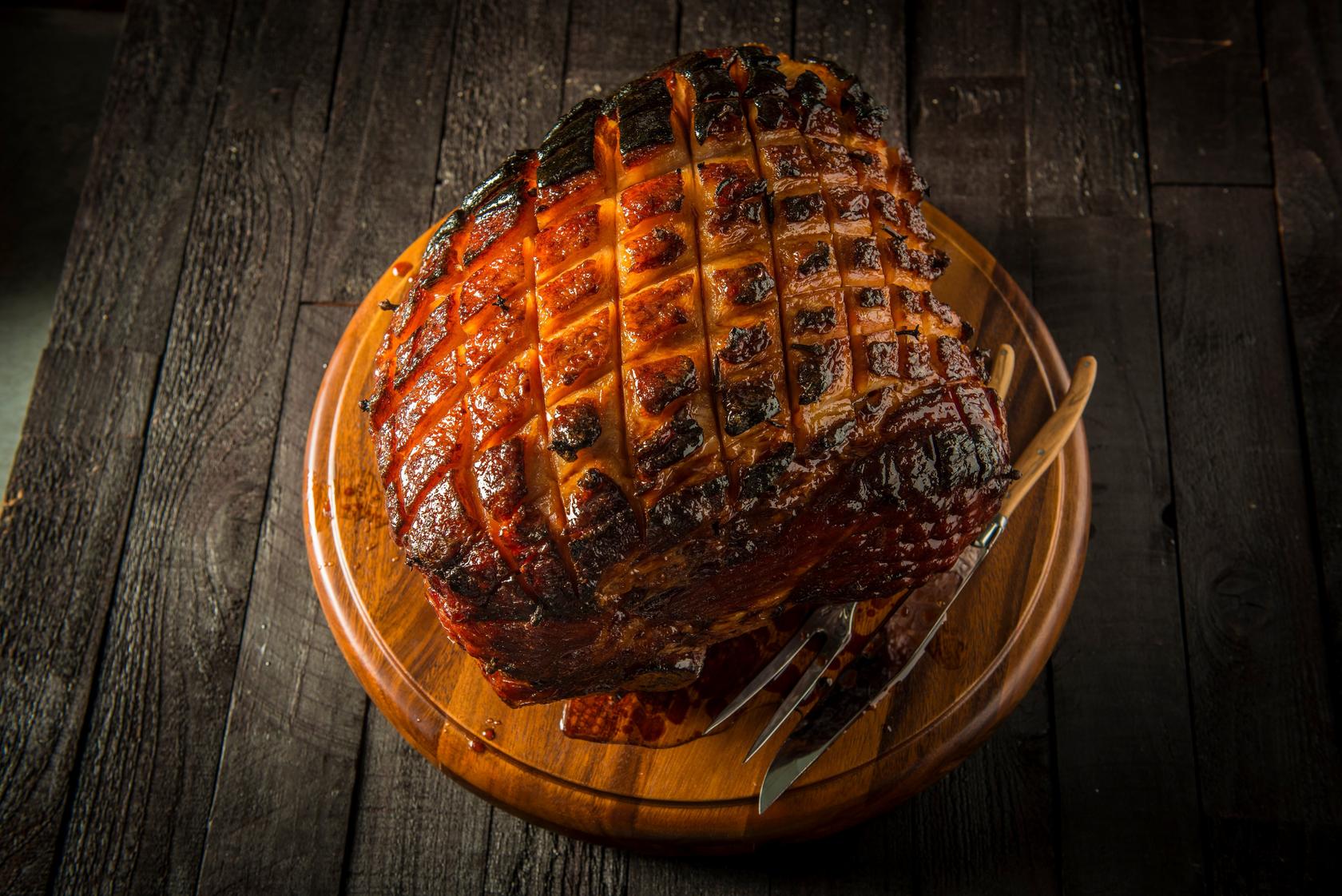
How and when to glaze ham
Because most glazes contain a high amount of sugar, they go on toward the end of cooking to keep those sugars from burning. While a little darkening is desired—it means the sugars are caramelizing and providing rich toasty notes—you don’t want the coating to turn black and bitter.
For this reason, it’s best to glaze the ham during the last 20 or 30 minutes of heating. Use a large spoon or a pastry/basting brush to slather the glaze all over the exposed surface of the ham. Let the glaze cook on the ham for 10 or 15 minutes, then repeat the glazing once more.
Let the ham continue to cook until the glaze is set and has darkened. (You want the internal temperature of the ham to be about 140°F when you take it off the grill.) Any glaze in the bottom of the pan that isn’t burned can be transferred to a dish and served with the sliced ham.
Some recipes call for raising the temperature of the oven or grill after adding the glaze. This is a good idea if you want the glaze to caramelize. However, you will want to pay close attention to ensure the glaze does not burn.
Ways to flavor ham glaze
Now that you know the basics of ham glaze, you can tinker with the basic formula to create the glaze of your dreams. The key is to balance sweet flavors with more assertive ones.
Start with sweet: Brown sugar is a classic sweet ingredient for ham glaze, but other options include maple syrup and honey as well as marmalades and jam. (You can also use a combination of sweeteners.)
Add a little sharpness: To keep the sweet from being too cloying, you’ll want to add something sharp. Mustard is an excellent choice, but a small amount of your favorite vinegar works, too.
Consider fruit flavors: Pineapple, orange, and apple are all complimentary flavors for savory ham so consider adding some diced fruit and/or fruit juice to the mix. Citrus zest is another wonderful way to add fragrant flavor to a ham glaze.
Make it aromatic with spices: A pinch of ground cloves added to a simple mustard and sugar glaze gives the glaze a more intriguing flavor. Other good options include ground ginger, nutmeg, and cinnamon.
Or add herbs: Chopped fresh thyme, rosemary, and/or sage always add depth of flavor and would go especially well with a glaze that includes maple or brown sugar, mustard, and orange juice
Spike it: Bourbon, especially when paired with maple, punches up the flavor of a traditional ham glaze.
Bring on the heat: Red pepper flakes, sriracha, horseradish, minced fresh chili or a smidge of smoky canned chipotle, can add a welcome kick to help counter all that sweetness. Start by adding a small amount and adjusting to your taste.
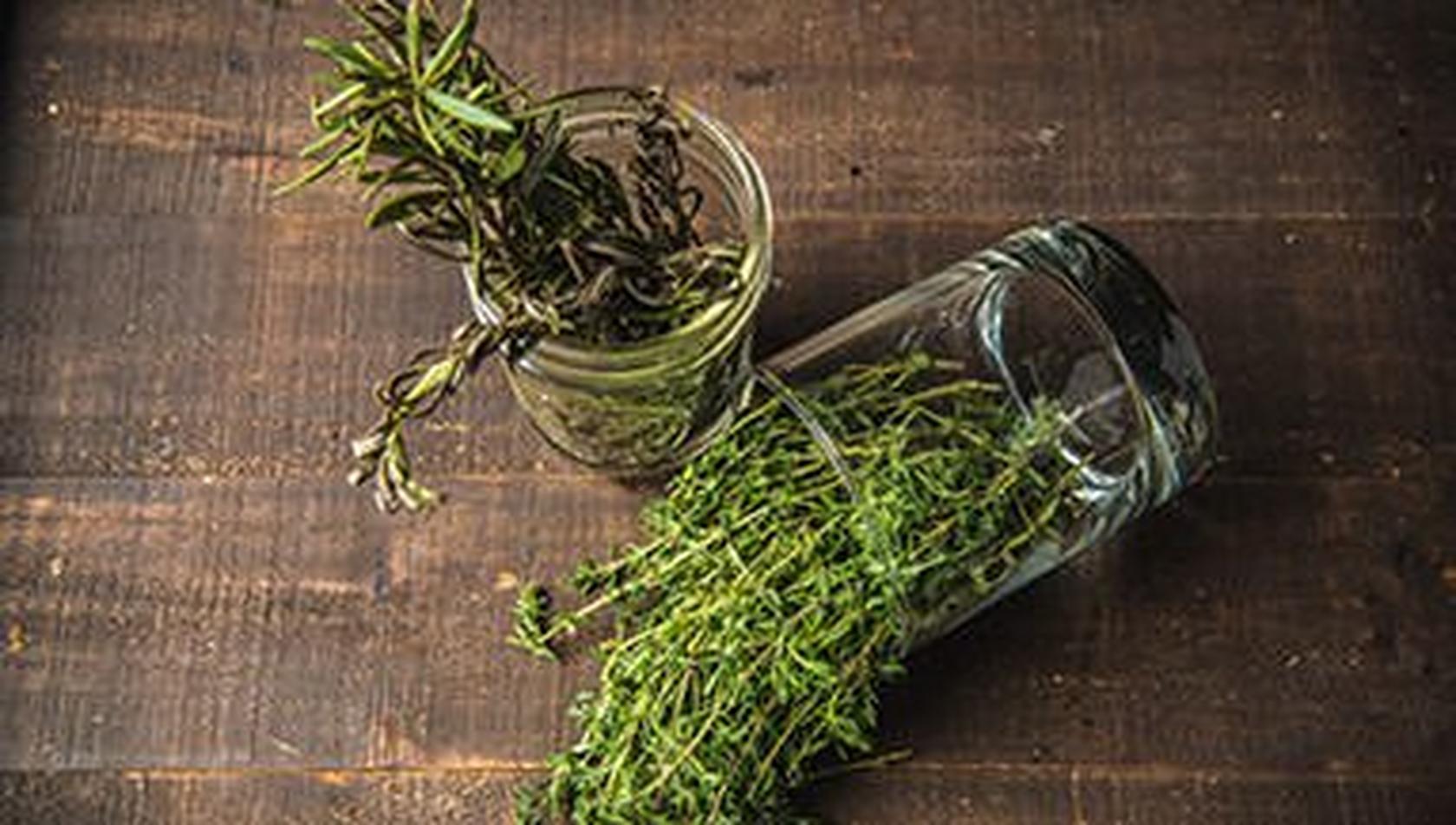
Traeger Glazed Ham Recipes
Here are some of our favorite wood-fired glazed ham recipes. Feel free to tweak the glazes themselves as you like.
Roasted Ham with Bourbon BBQ Glaze
Old Fashioned Roasted Glazed Ham
FAQ
Can I use a ham glaze on other foods?
Yes! Glazes are not only for ham. Ribs are a perfect vehicle for glazes and the same rules apply: Balance the flavors and brush the glaze on toward the end of cooking. You can also experiment with glazes on pork tenderloin, salmon, chicken, and even roasted vegetables like carrots and turnips.
What about the ham glaze packet that came with my ham?
Some hams come with their own little packet of glaze. While you are welcome to try it, they often contain preservatives as well. Since making your own (or using a Traeger glaze) is so quick and easy, you might as well toss the package.
Should a glaze be sticky?
Yes, you want your glaze to be sticky for it to stay on the ham.
Can I glaze a spiral ham?
Yes. We tend to avoid spiral hams because they can dry out too easily. However, a glaze will help prevent that. And there is a benefit with a spiral ham as the glaze will go deep down into the slices, flavoring more of the meat.
Orange & Maple Baked Ham
by Traeger Kitchen
9 Reviews
Prep Time
15 Min
Cook Time
2 Hr
Serves
3
Pellets
Pecan
This sweet maple and orange marmalade glaze makes for a memorable ham feast, whether around the table for Sunday dinner or Christmas Eve.
Ingredients
main
| 1 Cup | orange juice |
| 1/2 Cup | maple syrup |
| 1/2 Cup | Marmalade, Orange |
| 1/4 Cup | Dijon mustard |
| 2 Tablespoon | apple cider vinegar |
| 3/4 Teaspoon | ground cinnamon |
| 1/4 Teaspoon | ground cloves |
| 1 | ham |
1
When ready to cook, start the Traeger grill, set the temperature to 325 degrees F and preheat, lid closed, for 10 to 15 minutes.
2
Meanwhile, make the glaze: In a small saucepan, combine the orange juice, the maple syrup, marmalade, mustard, vinegar, cinnamon, and cloves.
3
Warm over low heat, whisking to combine the ingredients. Remove from the heat and reserve.
4
Place ham in large roasting pan lined with aluminum foil. Place pan on grill and cook for 1.5 hours.
5
Open grill and glaze ham with reserved mixture. Continue cooking for another 30 minutes or until a thermometer is inserted into the thickest part of the meat and reaches an internal temperatures of 135 degrees F.
6
Remove ham from grill and allow to rest for 20 minutes before serving.
7
Warm remaining sauce and serve with ham if desired. Enjoy!